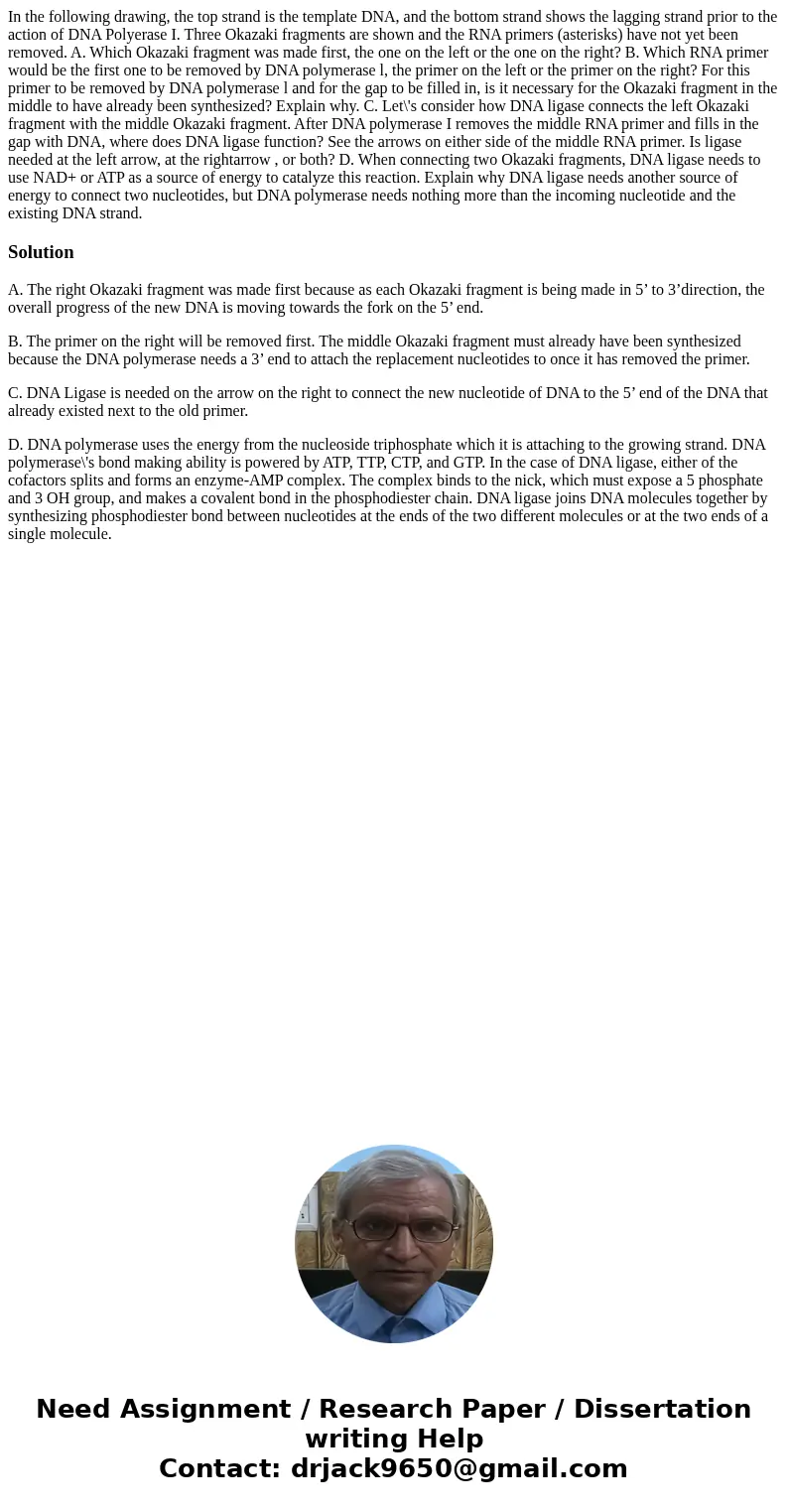In the following drawing the top strand is the template DNA
Solution
A. The right Okazaki fragment was made first because as each Okazaki fragment is being made in 5’ to 3’direction, the overall progress of the new DNA is moving towards the fork on the 5’ end.
B. The primer on the right will be removed first. The middle Okazaki fragment must already have been synthesized because the DNA polymerase needs a 3’ end to attach the replacement nucleotides to once it has removed the primer.
C. DNA Ligase is needed on the arrow on the right to connect the new nucleotide of DNA to the 5’ end of the DNA that already existed next to the old primer.
D. DNA polymerase uses the energy from the nucleoside triphosphate which it is attaching to the growing strand. DNA polymerase\'s bond making ability is powered by ATP, TTP, CTP, and GTP. In the case of DNA ligase, either of the cofactors splits and forms an enzyme-AMP complex. The complex binds to the nick, which must expose a 5 phosphate and 3 OH group, and makes a covalent bond in the phosphodiester chain. DNA ligase joins DNA molecules together by synthesizing phosphodiester bond between nucleotides at the ends of the two different molecules or at the two ends of a single molecule.

 Homework Sourse
Homework Sourse